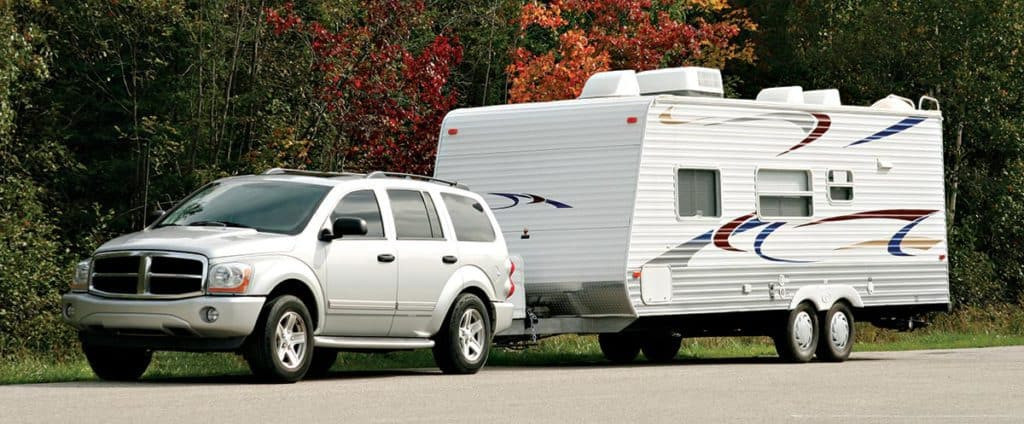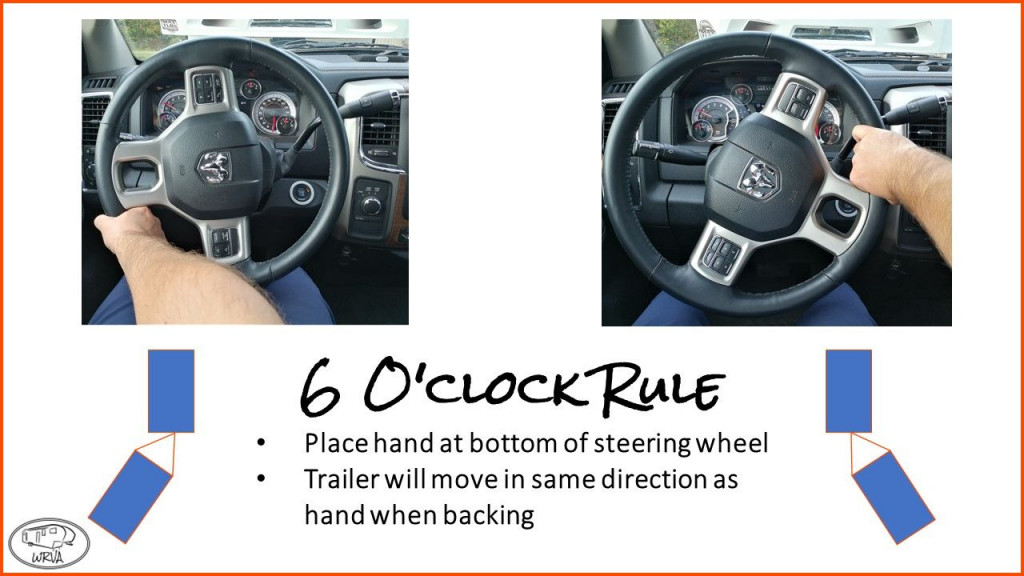
We will cover the basics you need to know and help you be ready for your first towing experience. It can be scary at first. But before long, you will feel comfortable and confident behind the wheel.
Hitch Your Vehicle Correctly
To drive safely, you need to be hitched safely. The basics are to make sure your hitch is on, locked in, and your cables are connected and working properly.
You also want to pay attention to the weight distribution. Looking at your tow vehicle and trailer, you want to observe a nice flat plane between the two. If there is tipping towards the hitch, or tipping away from it, they are not well balanced.
An imbalance can cause your trailer to be more vulnerable to sway, which we will talk about more in the driving section of this guide. The most accurate way to check weight distribution is to go to a truck scale and have them measure the weight on all your tires. Still, if you are parked on a flat surface, then you can generally get a good feel for it just by eyeballing it.
Check Your Visibility
Unless you have a rearview camera for your trailer, your rearview will be limited to the side mirrors on your tow vehicle. Make sure you can see the rear end of your trailer through both side mirrors.
If your visibility feels too limited, you can buy side mirror extensions meant for towing that will give you a wide-angle view as well as your normal mirror view.
Check Your Brakes and Brake Controller
Before you get out on the road, you want to make sure your brake controller is properly configured. The brake controller is what turns on the trailer brakes when you activate the tow vehicle brakes. It has a setting that controls how hard it applies the trailer brakes. To test it, get up to about 10 mph and then apply the brakes as you would for a normal stop.
You should feel like the trailer is tugging back on the vehicle just a tiny bit, especially as you come to a full stop. If you don’t feel the trailer tug, or worse, you feel it pushing you, then you need to turn the brake controller setting higher. If your stop is super jerky, then you need to turn it down.
What you are shooting for is to have the trailer braking just a tiny bit more than the tow vehicle. This keeps the trailer from pushing forward on the tow vehicle during braking, which could cause you to jackknife. It also ensures the fastest and smoothest stopping.
Know Your Height
It is crucial to know how tall your trailer is. The last thing you want to do is destroy it by trying to drive under a bridge that is too low. Find out your height, add a foot just to be sure, and avoid any passage marked with a lower clearance than that value.
Know Your Route
You don’t want to be confused over where you are going while driving a trailer. Your ability to maneuver in traffic or make course correction is considerably more limited, especially on narrow roads or in urban areas.
We highly recommend having a navigation system that includes a trailer or RV setting. This will do a few things for you. It will steer you clear of low bridges and the like. It will also keep you off of narrow one-way roads. Finally, it will let you know the proper speed for a vehicle of your type. Of course, it also helps you plot a good course to your destination.
Turning
This is easier than you might think. The trailer will naturally follow the path of your tow vehicle when moving forward. The only rule of thumb is that the longer your trailer is, the wider you want to turn. A long trailer can end up cutting a corner that was close to the vehicle. Just keep your turn as wide as the roadway reasonably permits, and you should be fine with nearly any right-angle turns. Curves and round-a-bouts are generally no sweat in a trailer. Trailers have a higher center of gravity than most vehicles. That means a turn that might be safe for a car, could tip a trailer over. Take it slow and steady and obey the recommended speed limits.
Backing Up
This is actually pretty challenging. And the bigger the trailer, the more tricky it becomes. You should practice when there is nothing to run into before you try it for real. The way a trailer backs up is not intuitive and simply takes getting used to before it feels natural. Take it slow and steady, and you should be fine. Our biggest tip for you here is to avoid situations where you need to back up under any kind of pressure. Thus, avoid doing it on the roadways, if at all possible. Stress and pressure will only make it harder and increase the chance of making a costly error.
Watch Video: https://www.youtube.com/watch?v=M3ThGeYn09w

Trailer Sway
Trailer sway is one of the special dangers of towing a travel trailer. The best thing you can do to deal with sway is to avoid it happening in the first place. Step one is to make sure you have good weight distribution on your trailer. Bad weight distribution lowers traction and amplifies the swaying. The second is not to drive in high winds. The bigger your trailer, the more sensitive it is to the wind.
Stopping Sway
The best thing to do is to use the manual trailer brake on your brake controller. This causes the trailer to engage its brakes, pulling back on the tow vehicle, forcing them into a straight line. You should practice this kind of braking in a parking lot or the like, so you can execute it calmly and know what it feels like. It can be a bit jarring if you have your brake controller such that it applies the trailer brakes a bit stronger than the tow vehicle brakes.
